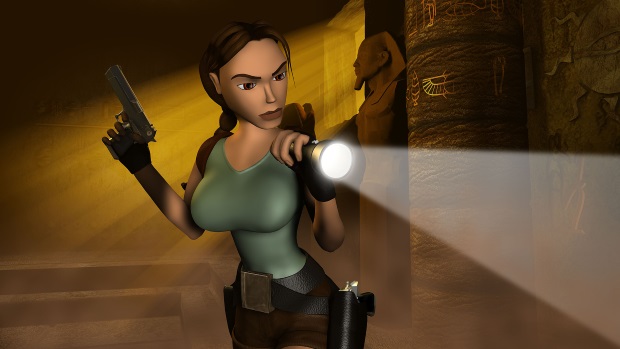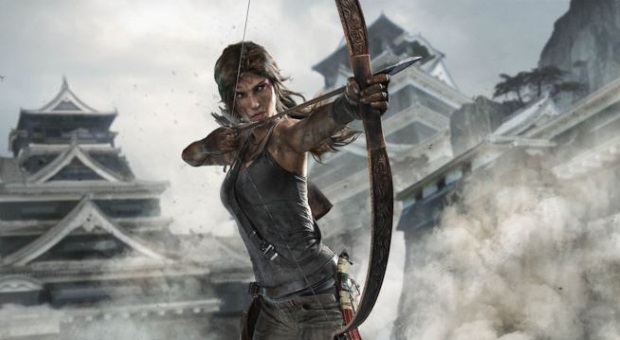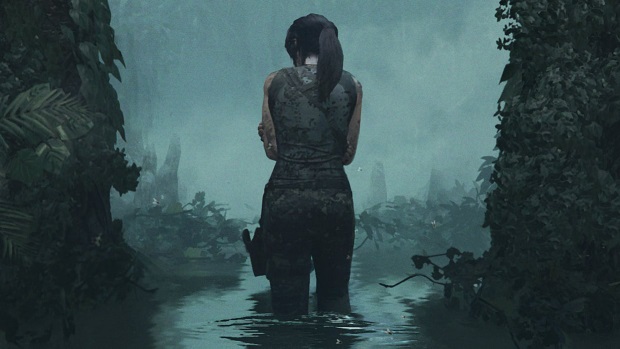Shadow Of The Tomb Raider: what next for Lara Croft?
Tomb Raider’s reboot trilogy is about to reach its conclusion. But is Lara’s personal journey doomed to end too?
Through the swirl of rumours and leaks, mounting pre-release hype and the usual raft of special editions, Lara Croft’s rebirth has been drawing to a close. Shadow Of The Tomb Raider, arriving any day now, is to be the conclusion of a transformative trilogy that sees the young heiress come to terms with the power and responsibility that her adventuring lifestyle confers upon her. Expectations are high following the success of the previous instalments, but there’s a question lingering: once this latest Lara has become the titular Tomb Raider, what happens to her next?
Historically, the Tomb Raider franchise has a sketchy record of knowing what to do with its lead character and defining what motivates her, though this hasn’t always been the case. The minimalist plot that accompanied the very first Tomb Raider – the 1996 original, that is – introduced players to a Lara that was not only already a confident explorer, but a renowned one, whose treasure-hunting exploits made her something of an in-universe celebrity. Though she’d been stranded in the Himalayas following a plane crash, an event the series would frequently return to, the incident had served only to harden Lara’s resolve. Her parents, meanwhile, were both alive and well – they’d simply disowned her.
It was a simple enough backstory, but it was more than enough to propel Lara to the status of a national icon – after all, she was a female Indiana Jones, so why shouldn’t the love of excitement and discovery be enough to motivate her? This cocky, confident Croft was a hit with gamers worldwide, even if she did seem suspiciously fond of Lucozade, and Tomb Raider II and III would do little to change the status quo. Behind the scenes, however, the original team at Core Design were feeling the strain of Lara’s success and the demand for sequels. For the fourth entry in the series, titled The Last Revelation, they conspired to kill her.

Despite being caught in a collapsing pyramid, though, Lara wasn’t to stay dead for long. The popularity of the series meant that a fifth game was mandated by publisher Eidos, although the developers decided to tell an anthology of anecdotes from Lara’s past, delaying her resurrection. Simultaneously, a fresh-faced second team was spun up to begin work on a next-generation Tomb Raider sequel. While these internal shake-ups would prove to have their own profound effect on Lara Croft, sweeping changes to her character and backstory were already underway – all thanks to the power of the silver screen.
As portrayed by Angelina Jolie, Hollywood’s version of Lara was driven both by the death of her mother, who died in the Himalayan plane crash, and the disappearance of her father, whose quest she eventually inherits. She was shown to be disinterested in the various opportunities offered to her by her butler; it’s a belated letter from, and thus the chance to save, her Dad serving as her call to arms. This Lara was less morally-ambiguous and more outwardly heroic, and the movie’s sequel saw her readily joining forces with MI6 – and an old boyfriend – to save the world once again.
When American developer Crystal Dynamics took over the Tomb Raider series following a negative response to Angel Of Darkness, the eighth game in the series, they incorporated many of these filmic elements into their trilogy of stories. Surrounding herself with a group of friends and confidants, Lara – while still an accomplished explorer – would continue to be driven by family tragedy, the now-familiar plane crash leading to her mother’s disappearance. Her obsession with first locating and then rescuing her mum finally came to a head in Tomb Raider: Underworld, and it seemed as though Lord and Lady Croft’s ghosts could finally be laid to rest, but fans eager to witness the next chapter of Lara’s life would have to wait. Another reboot was on the way.

Titled simply Tomb Raider and released in 2013, audiences were introduced to a younger, inexperienced Lara Croft – one who, at first, was simply struggling to survive before attempting to save her friends from the island on which they were marooned. While the game received some criticism for just how viscerally it put Lara through the wringer during her journey, it was a notably different take on the character’s origins and her personality – and yet its sequel, Rise Of The Tomb Raider, would soon fall back on family matters, seeing Lara relentlessly pursuing her discredited father’s archaeological research in an effort to clear his name. The 2018 movie, likewise, would use Lord Croft’s disappearance as the catalyst that pushed Lara into her fateful journey to begin with.
Avenging or exonerating a dead relative is hardly a trope that’s unique to the Tomb Raider games, of course, and it’s a common motivation for superheroes, but when it’s used repeatedly as the reason Lara gets out of bed in the morning, it feels like a bit of a shame. For one thing, it strongly implies that if the Croft family were still in one piece and humanity wasn’t under threat from shadowy organisations, Lara might not be out having adventures at all. Granted, after she’s been drowned, impaled, starved, mauled by a bear and shot at by mercenaries it’s not hard to imagine she might fancy a quiet night in watching Bake-Off – but that’s not fun*, and Lara used to have fun.
Indiana Jones gets to have fun. So do James Bond, and Han Solo, and Nathan Drake in the Uncharted series. Yes, they’re doing very dangerous things, but these characters are unabashed thrill-seekers, old-fashioned swashbucklers from the 1930s, and we love them for it. When Lara Croft was enigmatic and amoral, she was a uniquely female counterpart that could stand alongside these iconic figures. She didn’t need to settle a score nor to come to terms with a personal tragedy, nor was there any implication that she wished her life had turned out any differently.
This would be less of an issue if Lara was allowed to confront her personal demons and move past them, as the ending of Tomb Raider: Underworld implied she could do. There are plenty of video game heroes who’ve been shown to grow and evolve over a great span of time, leaving their traumas behind and facing new ones – God Of War’s Kratos, for example, has a whole new set of fears now that he’s a dad, but he’s the same tortured warrior as he was twenty years ago – nothing needed rebooting, and no lessons had to be forgotten.

It’s unlikely that Shadow Of The Tomb Raider, third act that it is, will ignore the spectral presence of Lara’s father – after all, she’s still seeking to thwart Trinity, the baddies who bumped him off. Once Shadow is done with, though, there are plenty of blank pages left to fill. For the first time in a long time, it feels like there’s a chance for Lara to finally step back out of her parents’ shadows and find her own reasons for jetting around the world, poking her nose wherever she pleases.
The art of video game storytelling has improved immeasurably since 1996, and there are so many tales that can be told about a wiser, more confident Lara – stories that can further enrich her character, not simply warm over 2001’s ideas. But those won’t happen if the only motivation Lara has for raiding tombs is to avenge her mum and dad. Even worse, if someone somewhere decides that another reboot is in order, she may never outlive her own origin story. So here’s hoping that when the Shadow Of The Tomb Raider’s credits have rolled, Lara Croft is given the chance to re-join the ranks of action heroes forged in fire. And here’s hoping, most of all, that no-one drops another pyramid on her head.
(* All right, it’s quite fun. But only if someone gets a soggy bottom.)
